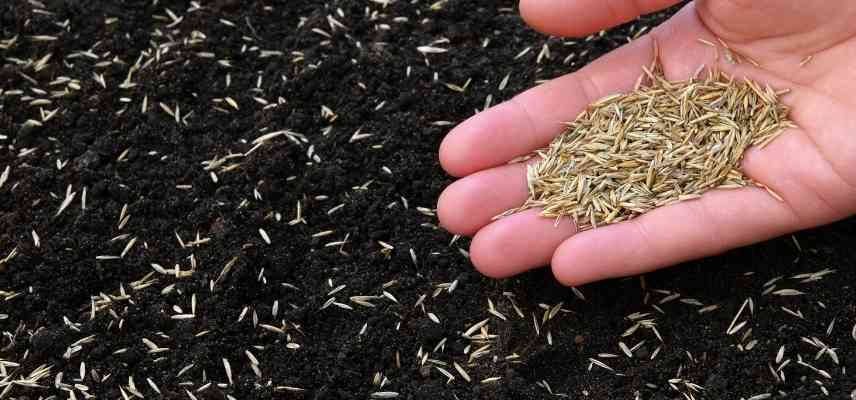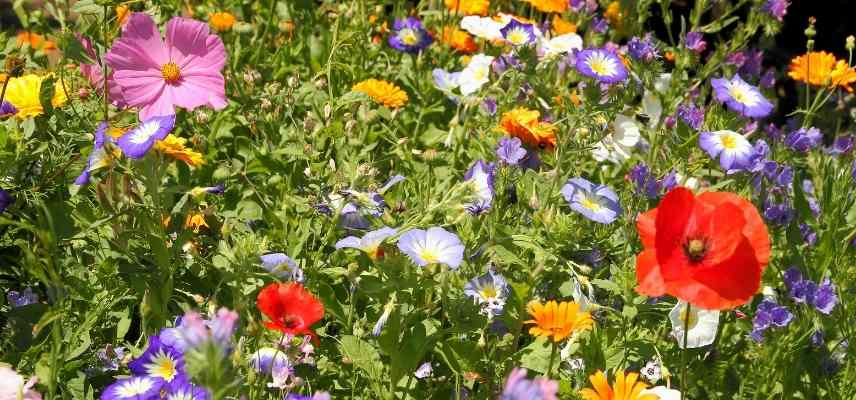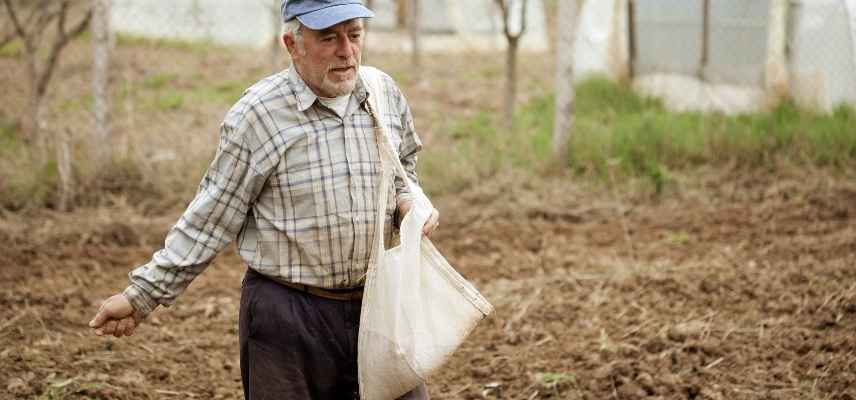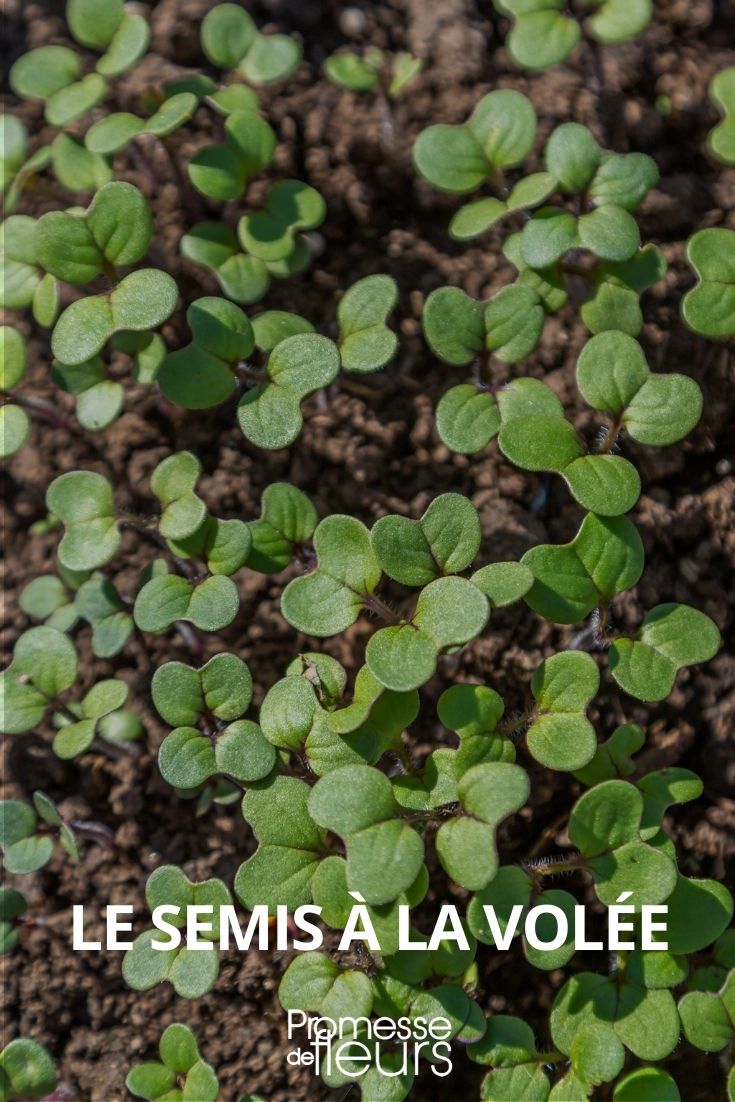
Broadcast sowing: the successful method
Preparing Your Soil and Seeds for Successful Sowing by Broadcast
Contents
Broadcast sowing is an ancient method that involves scattering seeds evenly across a plot of land, a field, or even a vegetable patch. This technique requires minimal soil and seed preparation, but broadcast sowing is not as easy as it seems to achieve a satisfactory result. Discover with us all the steps and tips for broadcasting seeds to achieve the appropriate density that meets your expectations.

Lawn sowing
Which seeds to sow by broadcasting?
Most seeds that are sown by broadcasting are very fine and almost impossible to sow individually. The seeds sown by broadcasting are mainly annual species. That is to say, plants that live for only one year and reproduce quickly.
In the garden, most of the species involved will be flowers, grass, or green manures.
Commonly sown in this way are cosmos, cornflowers, viper’s bugloss, sunflowers, marigolds, nigella, and poppies. In terms of cover crops (green manures), phacelia, mustard, vetches, clovers, and many others will be involved in this method.
In the past, our ancestors sowed wheat, spelt, or oats in this way over entire hectares.

A flower meadow or fallow land is sown by broadcasting
Read also
When and how to sow a lawn?How to go about it?
Several steps must be followed before the actual sowing to ensure optimal seed germination.
Prepare the Soil
Soil preparation is a crucial step to ensure your seeds germinate properly without being competed with by roots or other “weeds.” Therefore, prepare the soil by loosening it with a cultivator, fork, or any other soil-breaking tool. It is important to break up large clumps to allow the roots of the young plants to develop well. Finally, level the soil using a rake and remove any remaining roots and rhizomes.
Sow by Hand
Gather a container with your seeds. Take a handful of seeds with your sowing hand (the right one, for example) and raise it to chest height. Disperse the seeds in a rain-like manner by making an arc from your left shoulder to the right side of the trunk. Your torso should be upright, and your pace should be steady, with perfect coordination between your legs and arms.
This method is suitable for large areas to be sown, plots receiving green manures, or cereals.

If your sowing area is less than three metres wide, you will need to shorten your arc to avoid wasting seeds.
If you decide to sow a wildflower and ornamental annual area in a flowerbed, you should sow by hand while mixing your seeds with a substrate. Add seed compost or sand to your seeds and mix everything until you achieve a homogeneous distribution of seeds.
This method allows you to visualise where you have scattered your seeds and helps avoid oversowing.
If the seeds are very small, there is no need to cover them with a rake. Simply firm the soil lightly with the back of your rake or a roller.
Water
Water with a fine spray or choose your sowing day based on the weather (the day before a gloomy day). Keeping the seeds in a moist atmosphere is very important for uniform germination. Most seeds do not like fluctuations between wet and dry conditions.
Tips and remarks
- Don’t forget to accurately calculate the area to be sown to avoid overly dense sowing. This is a common mistake that will give you extra work when thinning your seedlings! This is less critical when sowing green manures or grass, which, on the contrary, should not be too sparse.
- Carefully read the instructions on the back of the seed packets to calculate the density (weight) of seeds per m2.
- It goes without saying that well-warmed soil and calm weather (without wind) will be very important conditions to avoid failure during germination.
- Subscribe!
- Contents
































Comments